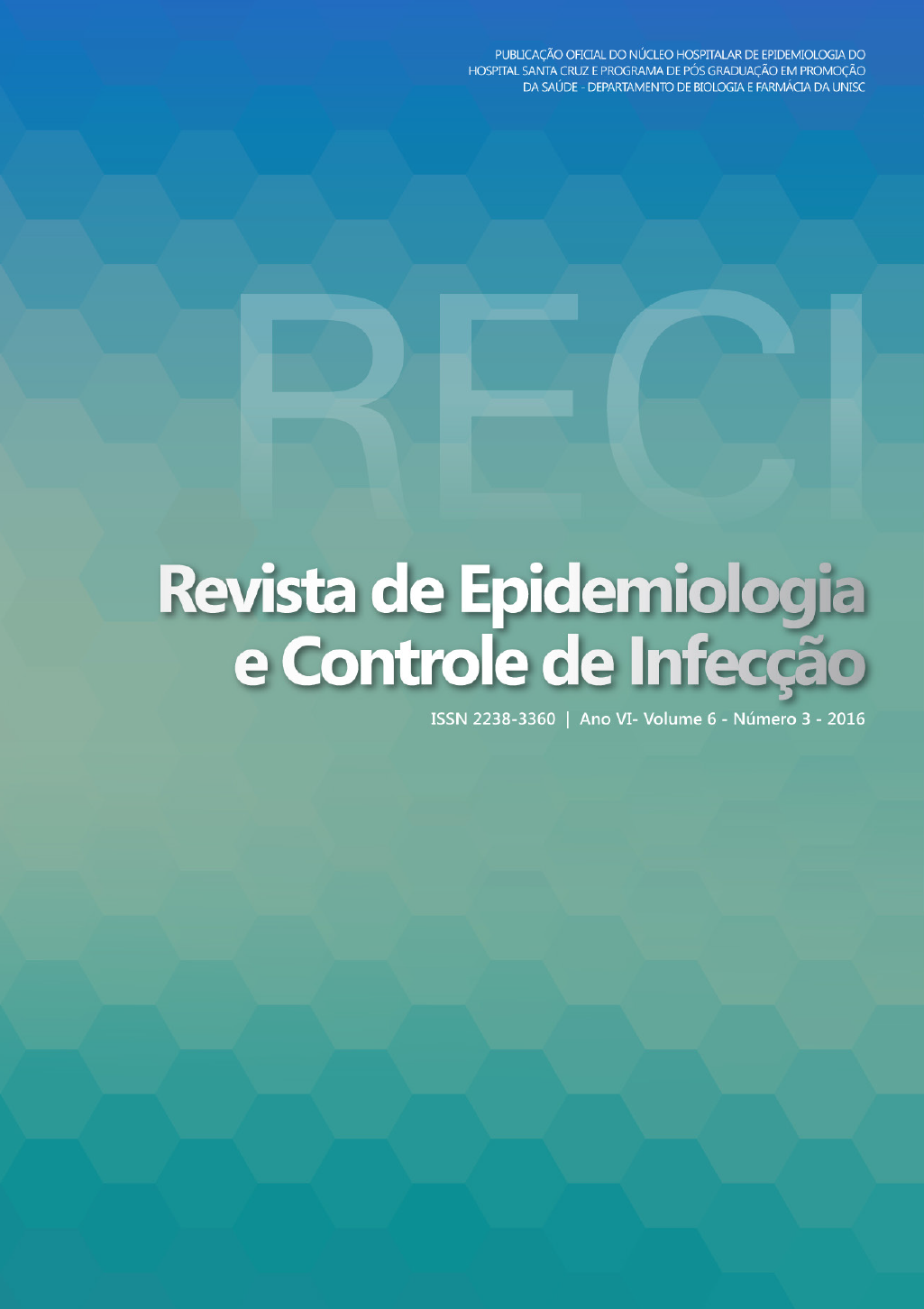Soroprevalência do HIV na população privada de liberdade no Amapá
DOI:
https://doi.org/10.17058/reci.v6i3.6449Resumo
Justificativa e Objetivos: Os apenados apresentam maior vulnerabilidade ao Vírus da Imunodeficiência Humana - HIV, que resulta em uma doença crônica e progressiva, podendo levar à destruição do sistema imunológico e também a outras Infecções Sexualmente Transmissíveis (ISTs) devido a fatores de risco como: compartilhamento de seringas, sexo desprotegido e outros. O objetivo deste estudo foi monitorar a prevalência da infecção pelo HIV no Instituto de Administração Penitenciária do Amapá- IAPEN, no ano de 2013. Método: Foram analisados 1.167 dados brutos de internos do IAPEN, dos sexos masculino e feminino que realizaram sorologia para HIV, maiores de 18 anos, durante uma ação de saúde realizada pelo Laboratório Central de Saúde Pública do Estado do Amapá (LACEN-AP), em parceria com Ministério da Saúde no ano de 2013. Resultados: Através deste estudo pôde-se constatar que 18 indivíduos apresentaram resultado reagente para HIV, representando assim 1,54% da população estudada. Não foram identificados fatores de risco associados à infecção pelo HIV.Conclusão: Considerando a importância do conhecimento deste agravo para a população, os resultados obtidos ajudam a conhecer os fatores de risco, sua significância e a prevenir a disseminação do HIV no grupo estudado.Downloads
Downloads
Publicado
Como Citar
Edição
Seção
Licença
The author must state that the paper is original (has not been published previously), not infringing any copyright or other ownership right involving third parties. Once the paper is submitted, the Journal reserves the right to make normative changes, such as spelling and grammar, in order to maintain the language standard, but respecting the author’s style. The published papers become ownership of RECI, considering that all the opinions expressed by the authors are their responsibility. Because we are an open access journal, we allow free use of articles in educational and scientific applications provided the source is cited under the Creative Commons CC-BY license.


